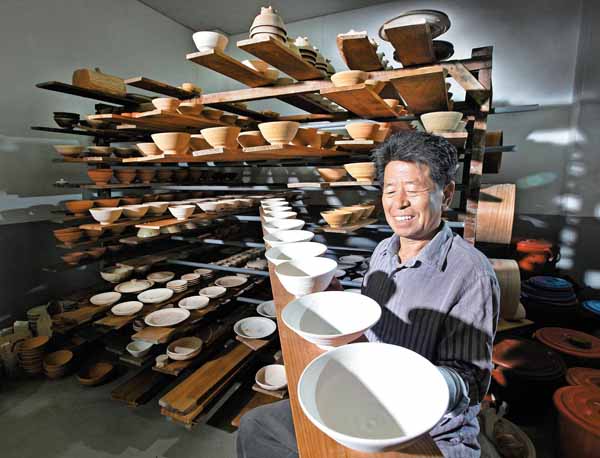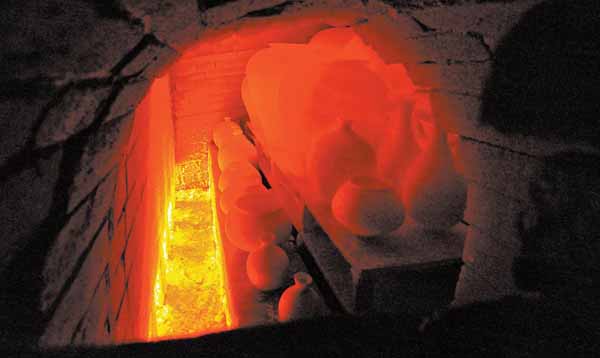Gyeongsang potter revives ceramic glory from Joseon times

Min Young-gi attentively observes the bowls after a firing before baking them in a kiln. He is a potter whose reproductions of Joseon-era tea bowls are considered the best in Korea.
Joseon Dynasty tea bowls - whether called Ido chawan in Japanese or Goryeo chawan in Korean - have long been the most-cherished type among Japanese tea experts, and back in the 15th and 16th centuries, they were very rare and expensive in Japan.

Min’s tea bowls are considered among the best, possessing a sense of historical culture going back 400 years.
Meanwhile, over in Japan, those kidnapped Joseon potters played an important part of the then-modernization of Japan, bringing the latest in ceramic technology.

Min’s teacups and porcelain pots are baked in a kiln. He creates his best work by heating the kiln to 1,260 degrees Celsius (2,300 degrees Fahrenheit).
After the intensive training, Min returned to Korea and in 1978 set up “Sancheongyo,” his own workplace in Sancheong, where he was born. It is a region that was once rich with potters before the Japanese invasion. In fact, you can still find the kiln sites where buncheong and white porcelain were once fired.
Tea bowls are Min’s most famous crafts. Using traditional methods, Min is without peer anywhere in China or Japan. Made on the spinning wheel and glazed, these bowls are well known for their simplicity and dignity.
Min had to bake and break about 350,000 tea bowls before he was able to make tea bowls like those used during the Joseon Dynasty, the kind classified as national treasures in Japan. He has received praise from Seizo Hayashiya, the former director of the Tokyo National Museum, and Jung Yang-mo, the former director of the National Museum of Korea.
“Porcelain should touch one’s heart with what one sees, touches and feels,” said Min, explaining about the aesthetic of porcelain that a potter should bear in mind. “Good porcelain should possess a proportionate beauty in its appearance and inner spirit and taste. And it should remain good after a hundred years because good porcelain transcends time and space. I would like to produce the best tea bowls using a relaxing mind, without greed.”
By Park Sang-moon[moonpark@joongang.co.kr]










with the Korea JoongAng Daily
To write comments, please log in to one of the accounts.
Standards Board Policy (0/250자)